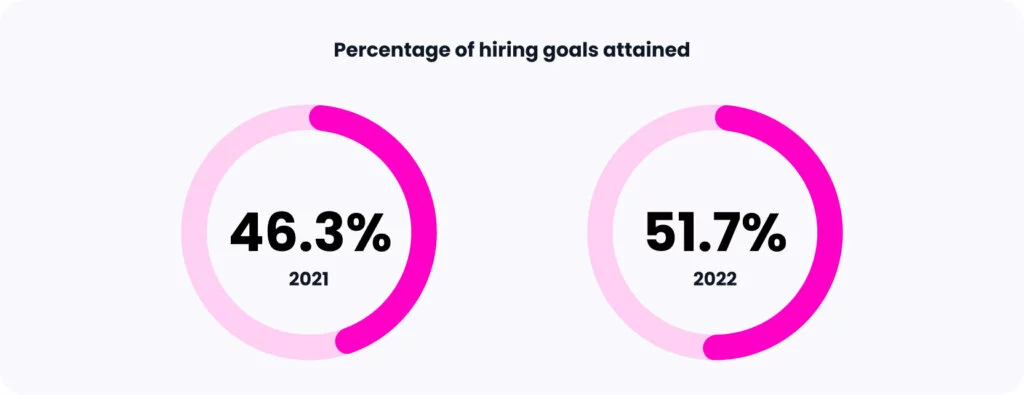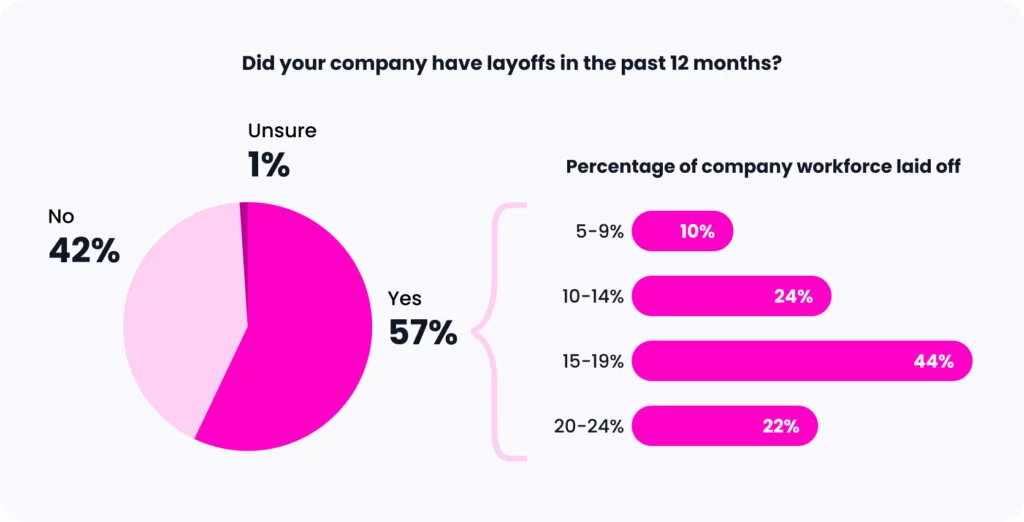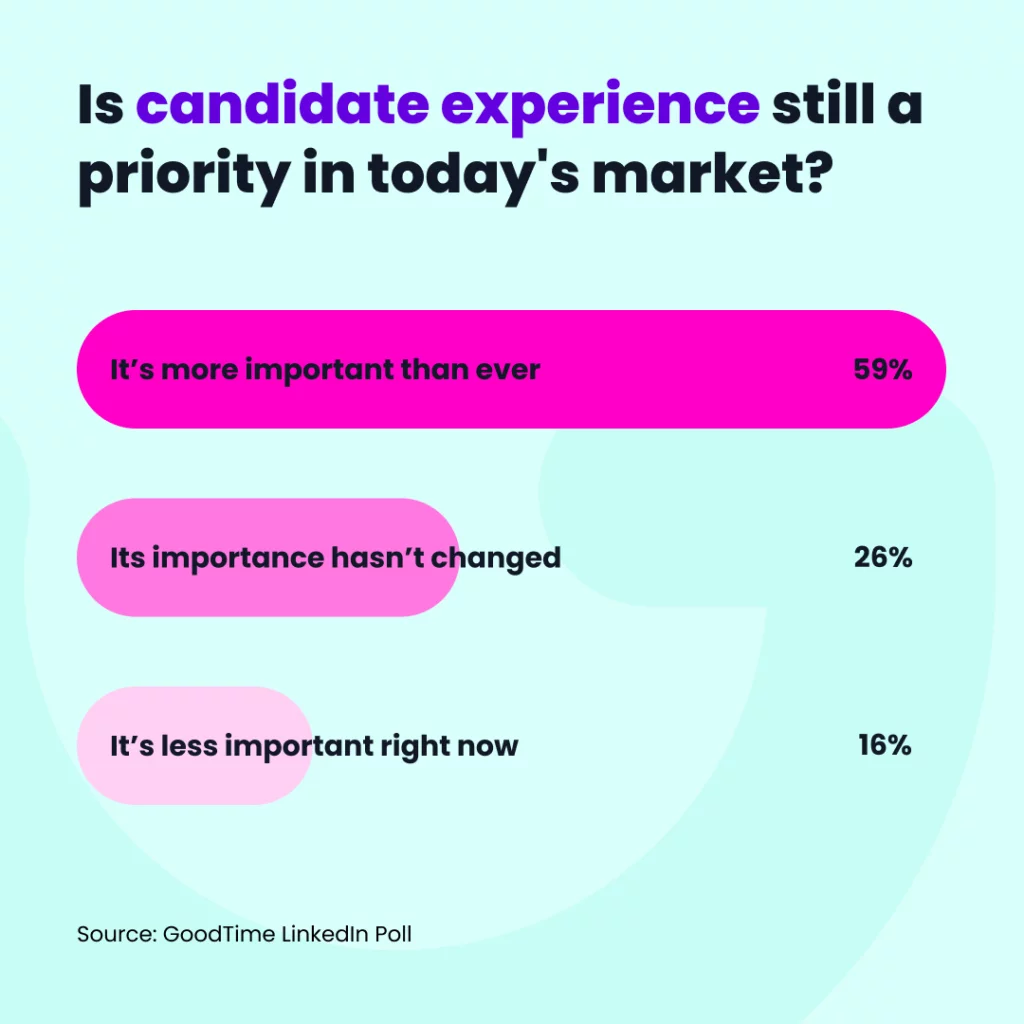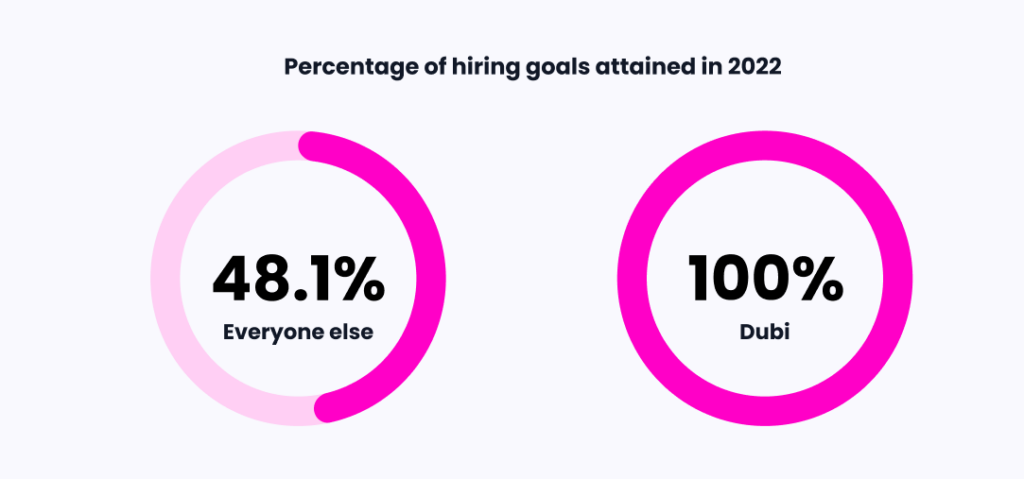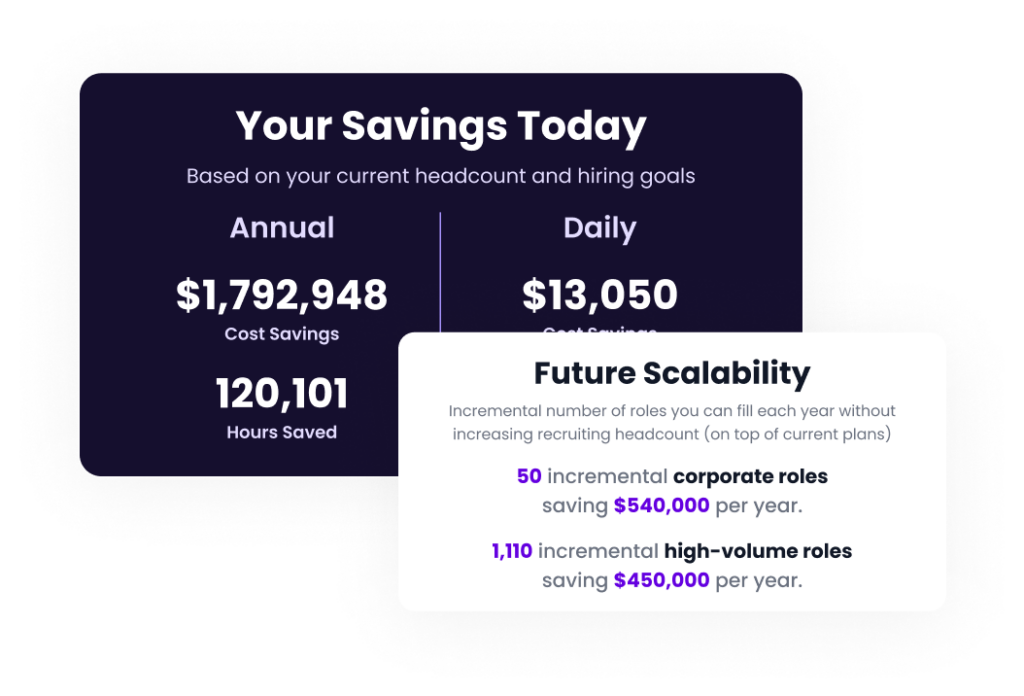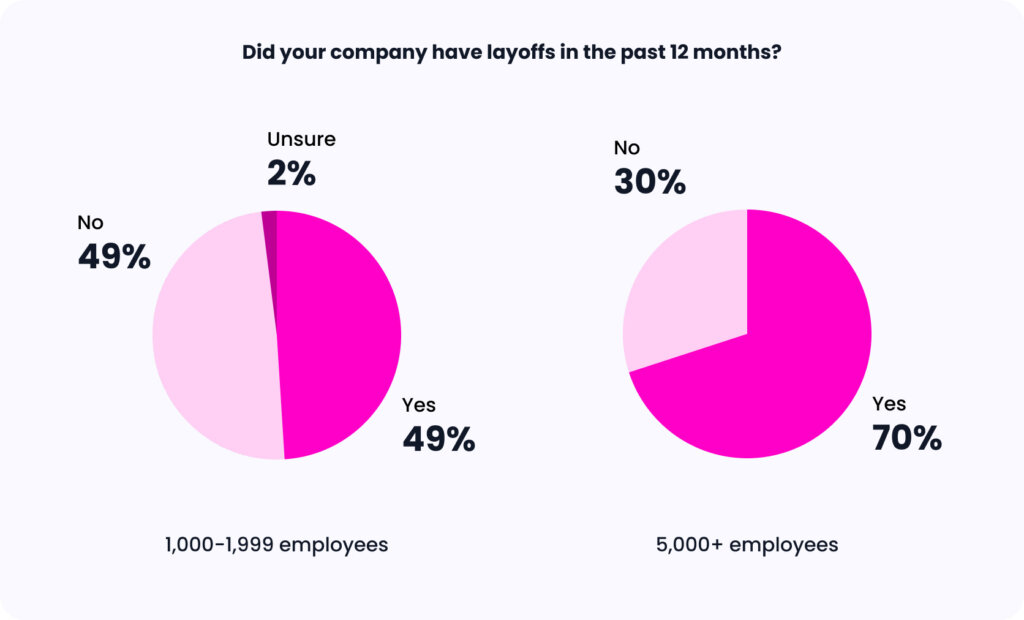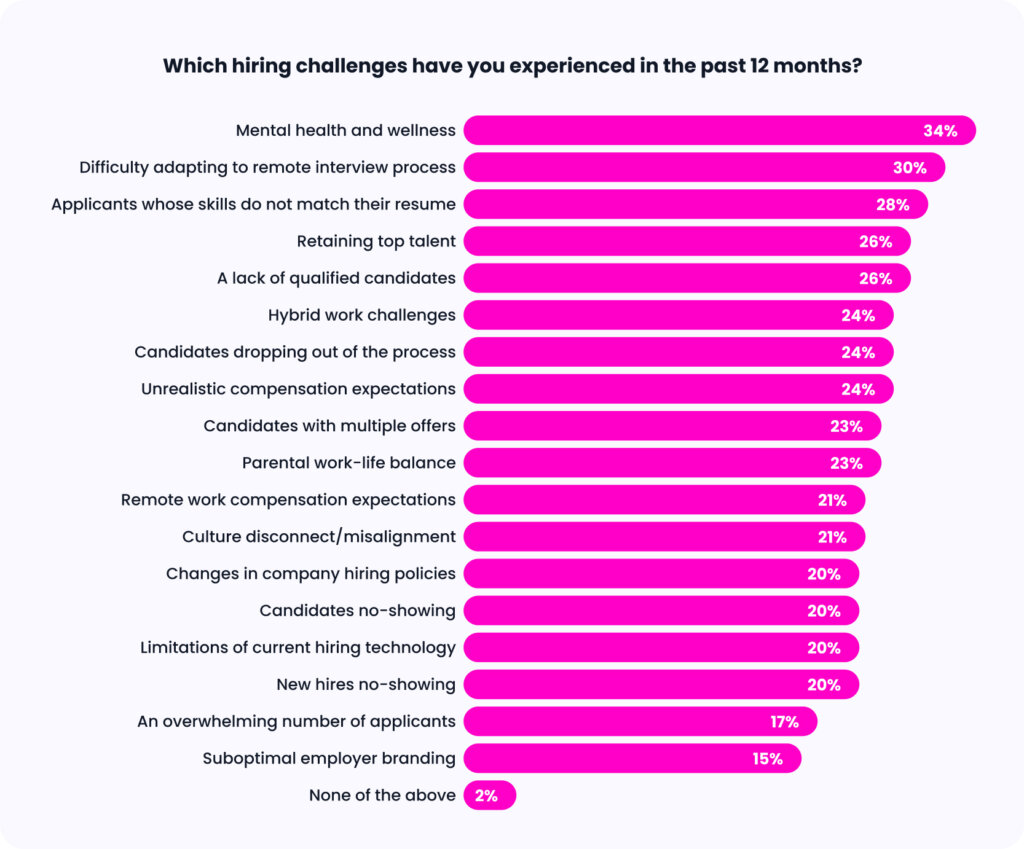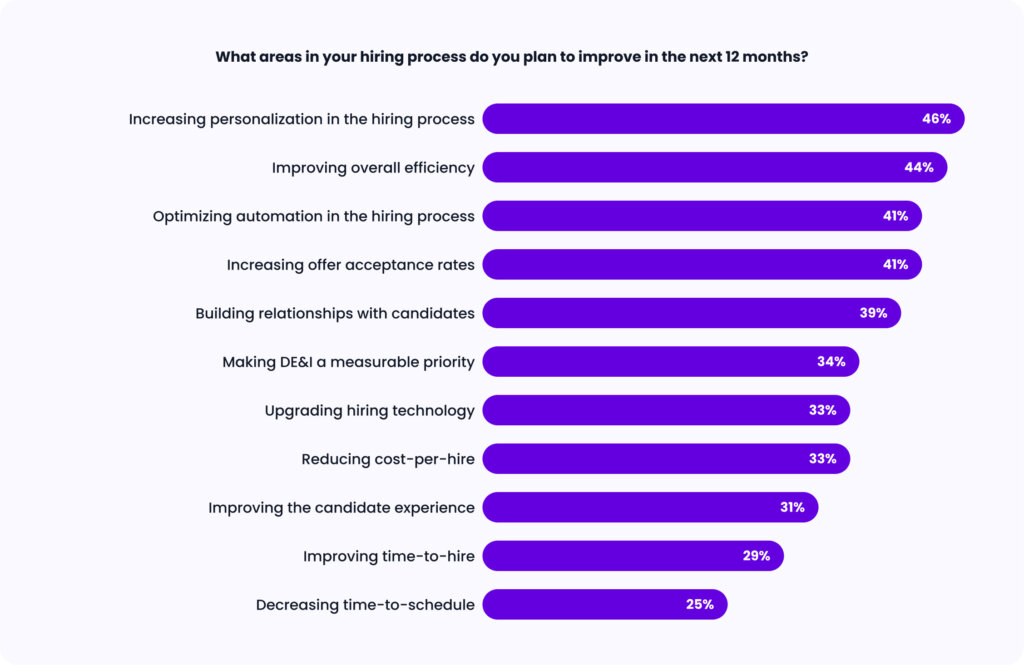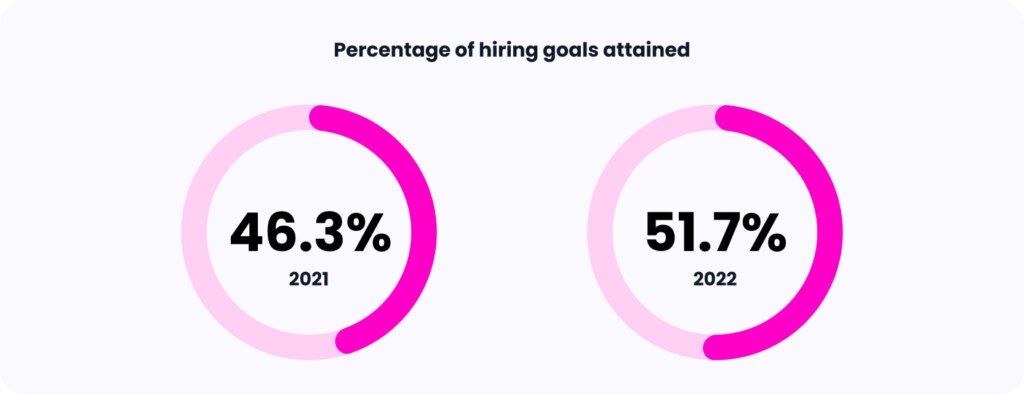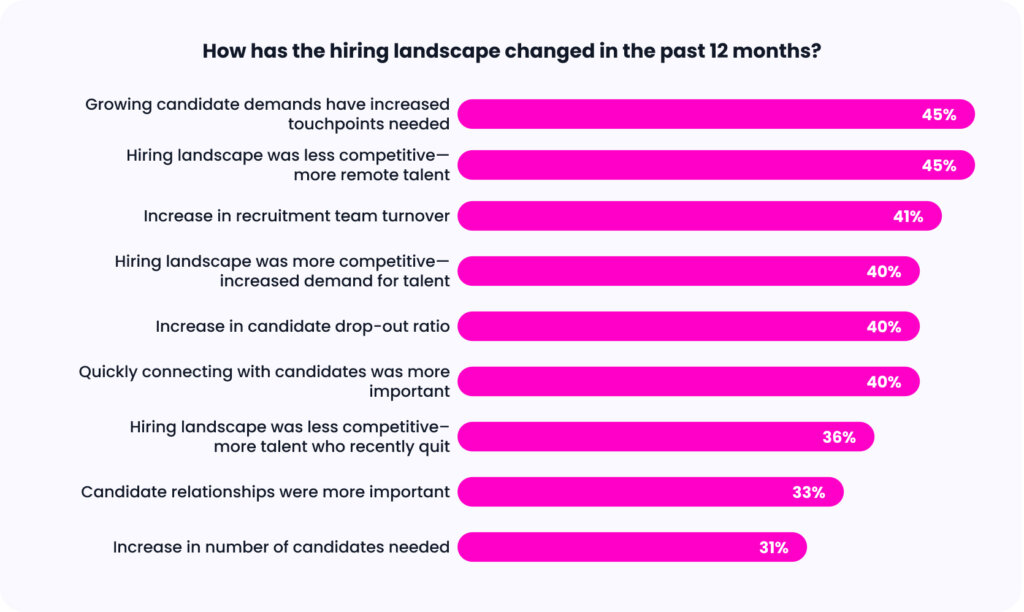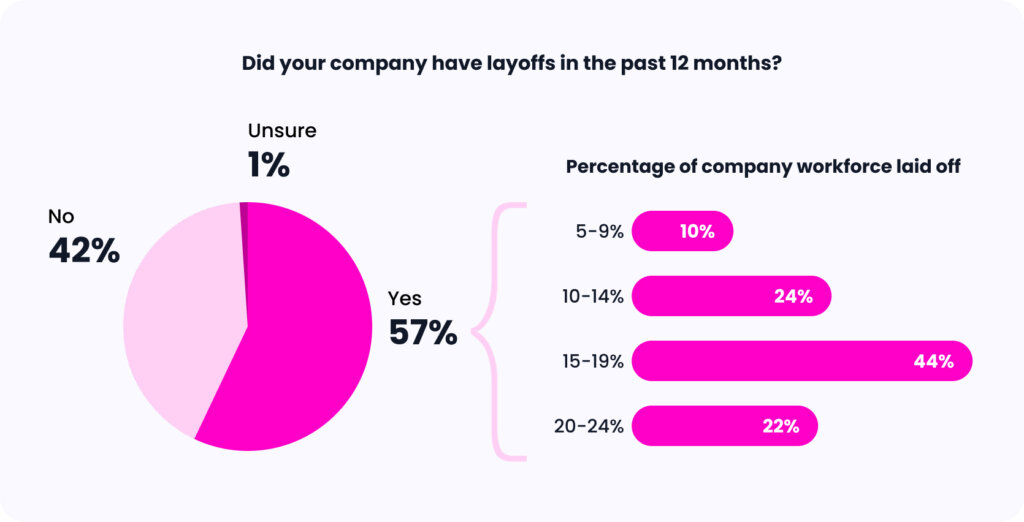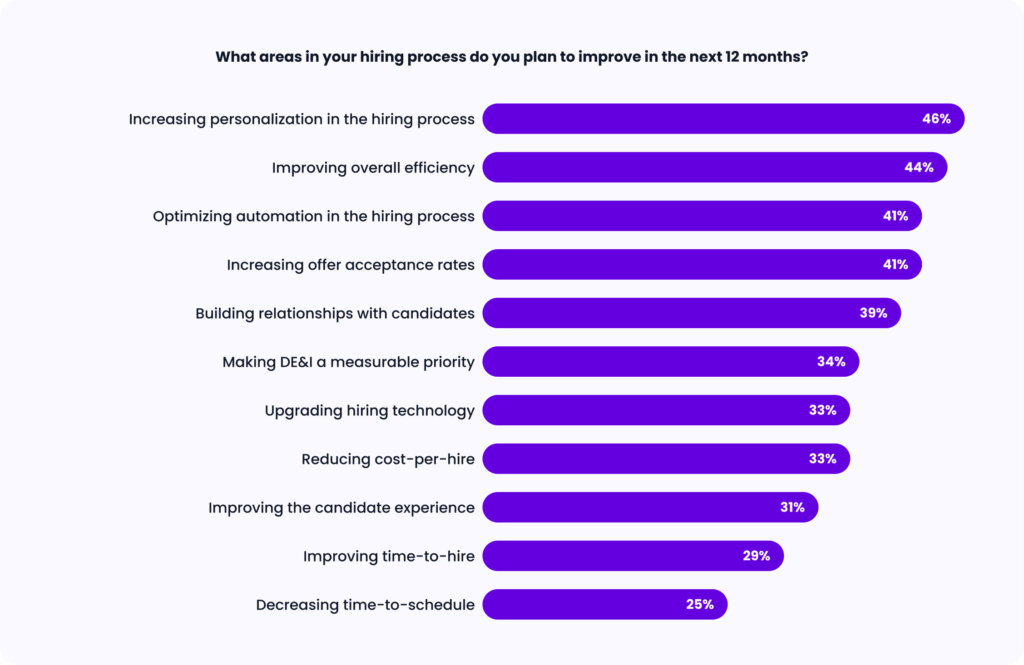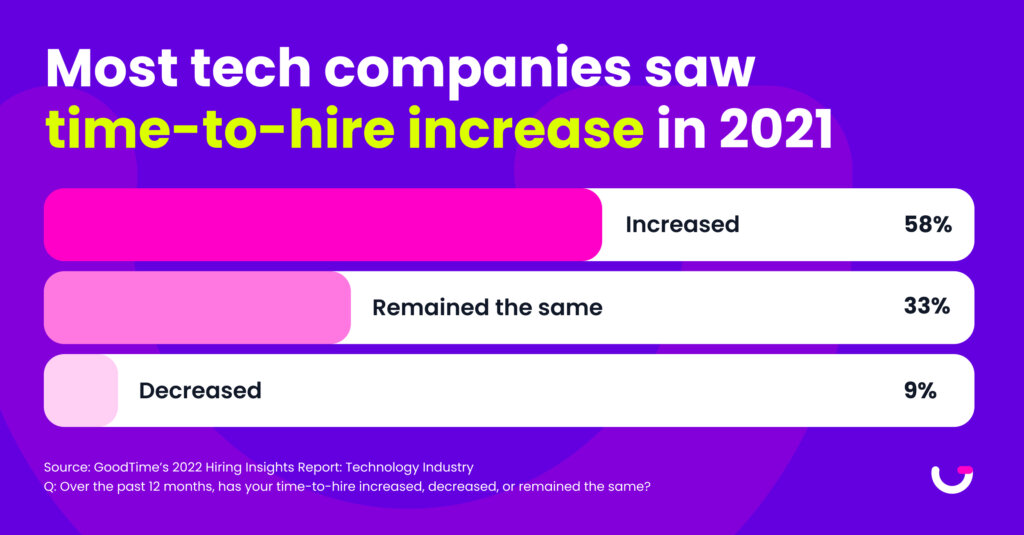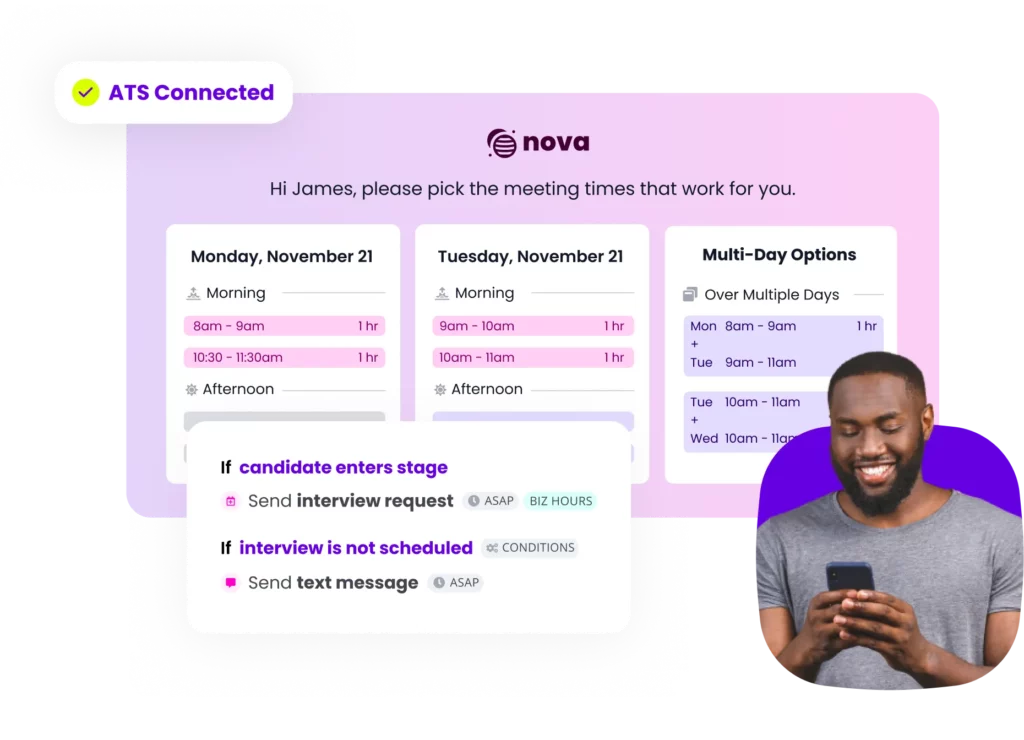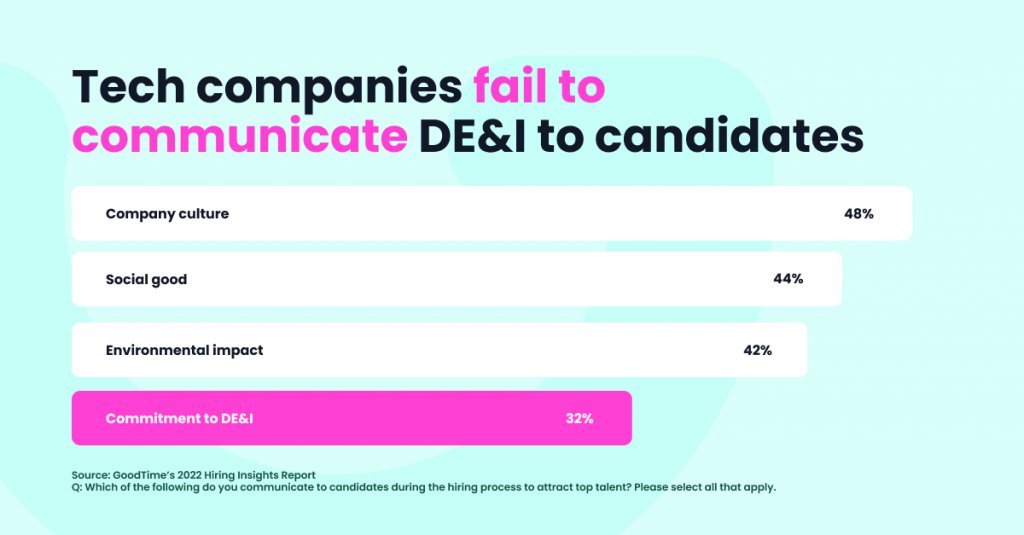It’s an exciting time to be a recruiter, but let’s be honest — 2023 was challenging and we don’t want to take the same struggles into 2024.
The best talent acquisition and recruiting conferences out there can help you relate with peers at other companies, hear how they’re adapting to the recruiting challenges of the current market, and inspire you to evolve your strategic vision for your own team in 2024.
But not all conferences are equal. We’ve been around the recruiting conference block a few times, and below have compiled just the best conferences to look out for in 2024. There’s a good mix of in-person, virtual, and hybrid conferences that are worth checking out, and even some on-demand options. And yes, several are completely free of charge!
Why attend a talent acquisition conference?
If you’re a recruiter or a talent acquisition leader, you already know about the challenges the sector has faced in the last couple of years. First, it was an extreme candidates market during the great reshuffle, where everyone was battling it out for top candidates. Then, the economic environment got tighter, teams became leaner, the number of candidates per open role skyrocketed, and at the same time, it became more important than ever to make the right strategic hire.
It’s a lot to keep up with. The recruitment world has had to become incredibly agile and adapt to continuous shifts. Our own hiring insights report found that on average, companies hit just 51.3% of their hiring goals in 2023.
Unlock 2024’s top hiring strategies: Insights from 500+ TA leaders
Discover proven solutions to 2024’s biggest hiring challenges – straight from the highest-performing TA teams.
But not everyone is struggling. Some Talent Acquisition teams are still hitting their goals. These conferences are where leaders reveal their secrets to success, and you can steal their formulas. In fact, you’re expected to — that’s kind of the point of them sharing! So don’t go it alone. The community has your back, and so do we.
More specifically, here’s why you should make time for recruiting and TA conferences:
- Stay updated: Get the latest recruitment trends and strategies from industry experts.
- Expand your network: Connect with professionals for potential partnerships and future job prospects.
- Gain inspiration: Hear from motivational speakers and discover fresh ideas.
- Access expert knowledge: Learn directly from experienced professionals.
- Professional development: Earn credits, attend workshops, and enhance your skills for career advancement.

Topics to watch for at the 2024 recruiting conferences
There are going to be a lot of sessions to choose from. Here are some of the hottest topics the recruiters we talk to are most interested in hearing about:
- Recruiting in a downturn
- How teams are thoughtfully leveraging AI recruiting
- How teams deal with worker shortages in industries like manufacturing and healthcare
- What software is most important to have in today’s recruiting environment
- How to succeed in high-volume recruiting
On-demand talent acquisition conference recaps, webinars, and seminars
There’s no need to wait to get up-to-date on the latest in talent acquisition. Check out these sessions you can watch or read about right now.
Unlocking Efficiency in Tech Recruitment: Do More with Less
Date: On-demand
Location: Virtual Webinar
Price: Free
This one’s for all the tech recruiting folks out there. GoodTime teamed up with Coderpad for a webinar dedicated to unlocking efficiency and scaling processes in tech recruitment. Our expert panelists shared proven strategies and techniques to save time, reduce costs, and hire the very best tech talent for your organization.
Watch on-demand or read our recap.
Exec Roundtable: How to Run Resilient Tech TA in Tight Times
Date: On-demand
Location: Online
Price: Free

Navigating the tech TA and recruitment whirlwind in recent years has felt like riding on a giant yo-yo. We’ve experienced everything from the frantic pace of explosive growth to the unpredictability of the great reshuffle. Now, it’s become a balancing act of maintaining leaner TA teams, managing surges of candidates, and ensuring every hire is a perfect strategic fit.
Join TA leaders from ClickUp and OLX for a frank discussion on real, proven, practical things hiring teams can do to hit their goals in a lean economy. This is not just another generic webinar, but an exclusive gathering of thought leaders ready to share, learn, and chart the path forward.
Exec Roundtable: Healthcare Recruitment in the Face of Labor Shortages
Date: On-demand
Location: Online
Price: Free

Healthcare TA leaders are grappling with a long-brewing labor shortage that has accelerated in the last 3 years. Healthcare recruiting pros are invited to watch our executive roundtable discussion to hear how other TA leaders are shifting strategies and adopting new tactics to hit their goals, even amidst a growing healthcare labor shortage.
This is not your typical webinar; it is a unique opportunity for industry leaders to share experience-based advice on critical focus areas for 2024, tools they use to keep high-volume roles filled continuously, and how they’re slashing time-to-hire without compromising on quality. And now it’s available for you to stream anytime, on-demand.
Exec Roundtable: Manufacturing Recruitment in the Face of Labor Shortages

TA leaders in the manufacturing industry must grapple with a growing labor shortage, further exacerbated by a high turnover rate in the sector. As of March 2023, there were approximately 700,000 open manufacturing jobs in the United States, and on average, manufacturing companies are achieving only 44% of their hiring goals. A GoodTime survey shows that time-to-hire has emerged as the top area of concern for manufacturing TA leaders.
Get an on-demand recording of our executive roundtable session where industry leaders converged to discuss strategies and innovative approaches to overcome the manufacturing labor shortage.
Join a Slack community just for recruiting pros
See what’s going on in the industry’s best place to connect, learn, and grow. Join over 2,500 recruiters and TA leaders in our free, private Slack community.

2024 recruiting conferences by month
January 2024
HR Vision New York
Date: January 17-18, 2024
Location: New York City
Price: $1,499.00
This event offers a valuable opportunity to gain insights into the evolving landscape of HR, particularly concerning technology-driven advancements in people management. The conference’s emphasis on the future of work, coupled with discussions about digital transformation and HR analytics, provides TA professionals with a chance to learn about innovative strategies for talent acquisition, engagement, and development. Moreover, the event offers networking opportunities, allowing TA professionals to connect with peers, benchmark practices, and build connections that can contribute to their ongoing success in navigating the ever-changing HR landscape.
Talent Acquisition Week
Date: January 29-February 1, 2024
Location: San Diego, CA
Price: $1,295+ (See pricing details on their website)
This conference stands out by hosting three leading industry events in a single week, covering Social Recruiting Strategies, Talent Sourcing Strategies, and Employer Branding Strategies. It provides a unique opportunity for TA pros to access best practices in sourcing, recruiting, and employer branding all in one place. Attendees can look forward to in-person networking, practical tips for improving candidate engagement and messaging, and insights on hiring and retaining diverse talent. With a lineup of experienced speakers and a focus on the future of recruiting, Talent Acquisition Week offers a comprehensive and valuable experience for HR and TA leaders seeking to stay at the forefront of industry trends and practices.
March 2024
HRWest: Better HR Today & Tomorrow
Date: March 5-6, 2024
Location: Oakland, CA
Price: $199
HRWest focuses on the future of work, offering a glimpse into top HR trends and strategies. Attendees can expect to gain valuable strategies and gameplans from their top-performing peers. Sessions focus on how to leverage HR technology effectively, tackle talent challenges, and navigate complex compliance issues. What sets HRWest apart are its influencer-led discussions, the opportunity to learn from HR excellence award winners, and the chance to connect with a global HR community of over 1,500 attendees.
April 2024
SHRM Talent Conference & Expo 2024
Date: April 14-17, 2024
Location: Las Vegas & Virtual
Price: $1,895 early bird pricing for non-SHRM members
The SHRM Talent Conference & Expo 2024 is a vital event for Talent Acquisition professionals. It addresses the need for innovative talent management in today’s dynamic job market. Connect with experts, explore data-driven strategies, and adapt your approach for success. Gain actionable insights, build meaningful relationships, and access cutting-edge solutions. With 7 content tracks, it covers recruitment, talent selection, data analytics, diversity, and more. This event empowers you to excel in an ever-evolving job landscape.
ASHHRA24 Conference 2024
Date: April 14-16, 2024
Location: Fort Worth, Texas
Price: TBD
This one’s for talent acquisition leaders in healthcare! ASHHRA24 is set to take place in Fort Worth, Texas. This event, known for being the longest-running in its field, offers a diverse range of dynamic keynote speakers, innovative breakout sessions, and engaging networking activities. It’s an ideal opportunity for HR professionals in healthcare to connect with peers, explore the latest industry trends, and transform their HR skills with specifically curated content. Participants can also earn continuing education credits. Registration is already open!
Workhuman live

Date: April 15-18, 2024
Location: Austin, Texas
Price: $1,495
Workhuman live stands out for its unique immersive approach and its start speaker — Dr. Brené Brown! Attendees can look forward to a program that cuts through the noise and zeros in on the core priorities and challenges facing talent acquisition teams, and really all of HR. With fewer tracks but more targeted sessions and workshops, this conference promises valuable takeaways for TA experts.
Workhuman Live also emphasizes human connection, offering ample networking opportunities and credits for attendees.
May 2024
Unleash America
Date: May 7-9, 2024
Location: Las Vegas
Discover the future of HR, learning, and recruitment at UNLEASH America, featuring leaders such as Earvin ‘Magic’ Johnson and the FBI’s Chief Human Capital Officer. Enhance your skills across 15 diverse stages, including Main Stage Keynotes, CHRO Panels, and targeted sessions on talent acquisition, HR technology, and beyond. Immerse yourself in the deep knowledge offered in Breakout areas, Pre-Event Summits, Roundtables, and the four stages of the Exhibition. Absorb critical insights from actual successes and hurdles, and gather practical strategies to apply in your organization.
Engage Boston

Date: May 14-15, 2024
Location: Boston, MA
Price: $699
Bullhorn’s Engage Boston conference is designed to help busy TA pros stay at the forefront of the staffing and recruiting industry. It’s more tech-focused than some of the other conferences in this list, providing opportunities to get hands-on with the latest recruitment technology and learn from industry leaders how they build that tech into their hiring process.
And of course, you’ll also get to network with both staffing and HR tech leaders and get a glimpse at what the future of tech-enabled recruitment looks like.
June 2024
Talent42
Date: June 3-4, 2024
Location: Seattle, WA and virtual
Price: $1,399 in-person, $349 virtual
What sets Talent42 apart is its unwavering focus on tech recruitment specifically. Attendees can expect to learn from the world’s best technical recruiters, gain insights from developers, engineers, and tech candidates, and participate in hands-on workshops and breakouts.
My favorite thing about Talent42 is its commitment to delivering practical knowledge in a small-group setting. Whether attending in-person or digitally, this conference offers a unique chance to connect with industry leaders and access a wealth of on-demand knowledge.
SHRM24
Date: June 23-26, 2024
Location: Chicago, IL
Price: $2,195, with discounts available for SHRM members
SHRM24 is SHRM’s flagship annual conference.
Creating a better work environment is a continuous journey. The sessions at SHRM24 are designed to empower you to embrace change, innovate in your organization, and boost your own career. Join HR professionals dedicated to improving HR, even with tighter budgets and leaner resources. Attend engaging sessions, work with industry leaders, and gain the knowledge and tools for your journey forward.
As is common with SHRM events, you’ll have the opportunity to explore a customizable learning journey of skills development and competency-based HR education. SHRM-certified? You’ll get 25+ PDCs!
July 2024
NAHCR24
Date: July 16-19, 2024
Location: Norfolk, VA
Price: TBD
In healthcare recruitment? This one’s for you.
NAHCR’s Annual Conference is tailored for health care recruiters at every career stage, from newcomers to VPs. Designed by seasoned health care recruiters, the conference promises relevant content that addresses current recruitment challenges and prepares your organization for the future. Attendees will gain actionable strategies from industry experts, learn from peers about overcoming challenges, and discover valuable vendors in an interactive exhibit hall.
September 2024
Workday Rising 2024 US

Date: September 16-19, 2024
Location: Las Vegas, Nevada and online
Price: TBA, previously $1,895 for an early bird pass, $299 for a digital pass, or free for a Digital Essentials pass
Workday Rising offers a unique blend of cutting-edge technology, groundbreaking advancements in AI and machine learning (ML), and an exceptional global community, all aimed at empowering you to lead the way in shaping the future of work.
Workday Rising 2024 is set to captivate the HR and tech community in Las Vegas. This premier event, blending in-person and digital experiences, is a must-attend for those passionate about HR technology and strategy. Anticipate inspiring keynote sessions, informative breakout discussions, and valuable networking opportunities, all set against the backdrop of the vibrant Mandalay Bay Hotel. Ensure you stay informed by signing up for updates.
HR Technology Conference & Exposition
Date: September 24-27, 2024
Location: Las Vegas, Nevada
Price: TBA, registration opens March 1
HR Tech is dedicated to helping HR teams leverage technology to smash their goals, discover new tools, and learn about the strategies and processes necessary for success.
Not sure which sessions to attend? All breakout sessions are organized into learning tracks that are focused on key HR issues. These include DE&I, employee experience, HR digital transformation, and people analytics, among others.
Indeed FutureWorks 2024
Date: September 25-26, 2024
Location: Dallas, Texas
Price: TBA, previously $299 for in-person or free virtually
Indeed FutureWorks 2024, returning this September in Dallas, Texas, promises to be a landmark event for those exploring the future of work. Attendees can expect celebrity speakers, enlightening sessions, and direct access to the latest Indeed solutions. This blend of inspiration, learning, and networking is tailored for talent professionals seeking to stay ahead in the evolving job market. Details for the event, including pricing and registration, are yet to be announced.
Oh and last year’s keynote speaker was Viola Davis! We’re definitely keeping our eye on this one for 2024’s featured speaker.
October 2024
Talent Connect

Date: October 28, 2024
Location: Phoenix, Arizona and Online
Price: Free
Join the foremost talent leaders, innovators, and influencers at LinkedIn Talent Connect 2024. Previously, this unique event featured an exploration of the future of work through two avenues:
- Summit (In-person): An exclusive event for leaders to collaborate on industry challenges and strategies. Network and build solutions for driving business outcomes.
- Show (Online): Connect virtually with global peers. Access exclusive content, speakers, and Summit highlights.
With previous speakers like Spike Lee, Ryan Roslansky, and Jennifer Shappley, 2024 is sure to bring even more inspiring A-listers — even if you can only join virtually!
November 2024
Workday Rising EMEA 2024
Date: November 12-14, 2024
Location: London, UK
Price: TBA
Workday Rising EMEA 2024 in London is a must-attend event for HR professionals and technologists in Europe. Following the success of its previous edition, the conference promises to offer a mix of keynotes, sessions, and event highlights. It’s known as a place where innovation in the future of work continues to thrive. Attendees can expect insights and strategies to lead in their fields, with over 50 sessions available on demand, providing a deep dive into the latest trends and solutions in HR technology.
More talent acquisition conferences to watch for in Fall 2024
The conferences below haven’t yet announced dates or details, but check back here or subscribe to our newsletter to stay in the loop. Some of the biggest and best recruiting conferences of the year take place in the Fall, so you don’t want to miss out!
GEM Talent Summit 2024
Date: TBA Fall 2024
Location: Virtual
Price: Free
The demand to elevate Talent Acquisition into a strategic powerhouse has reached unprecedented levels.
Join our partner Gem’s Talent Summit 2024 to unlock the secrets to success in Talent Acquisition in today’s market. Learn from visionary leaders, discover innovative solutions, and connect with an expansive network of Talent Leaders shaping the future of recruiting. This event is definitely one to attend if you can, and typically features TA leaders from all-star companies like Nissan, Capital One, and Visa.
Learn more from the conference’s 2023 site and watch sessions on-demand.
Talent Success Conference
Date: TBA Fall 2024
Location: Virtual
Price: Free
The Talent Success Conference is a must-attend event for Talent Acquisition professionals. It offers insights, strategies, and networking opportunities to stay updated on the latest trends and technologies in talent acquisition. Perfect for both experienced recruiters and newcomers, the conference is a hub of valuable resources and connections for driving excellence in recruitment. Keep your eyes peeled for announcements about the 2024 edition!
Learn more from the 2023 event website.
Stay ahead of the curve on recruiting technology
With the challenges TA teams faced in recent years, these gatherings offer a chance to connect, learn from peers and experts, and reshape strategies. The carefully curated selection for 2024 covers topics from AI to coping with industry-specific shortages, providing opportunities for growth and innovation. These events are transformative, equipping professionals to excel in recruitment and shape the future of talent acquisition. Hopefully, we’ll see you at a recruiting conference soon!



